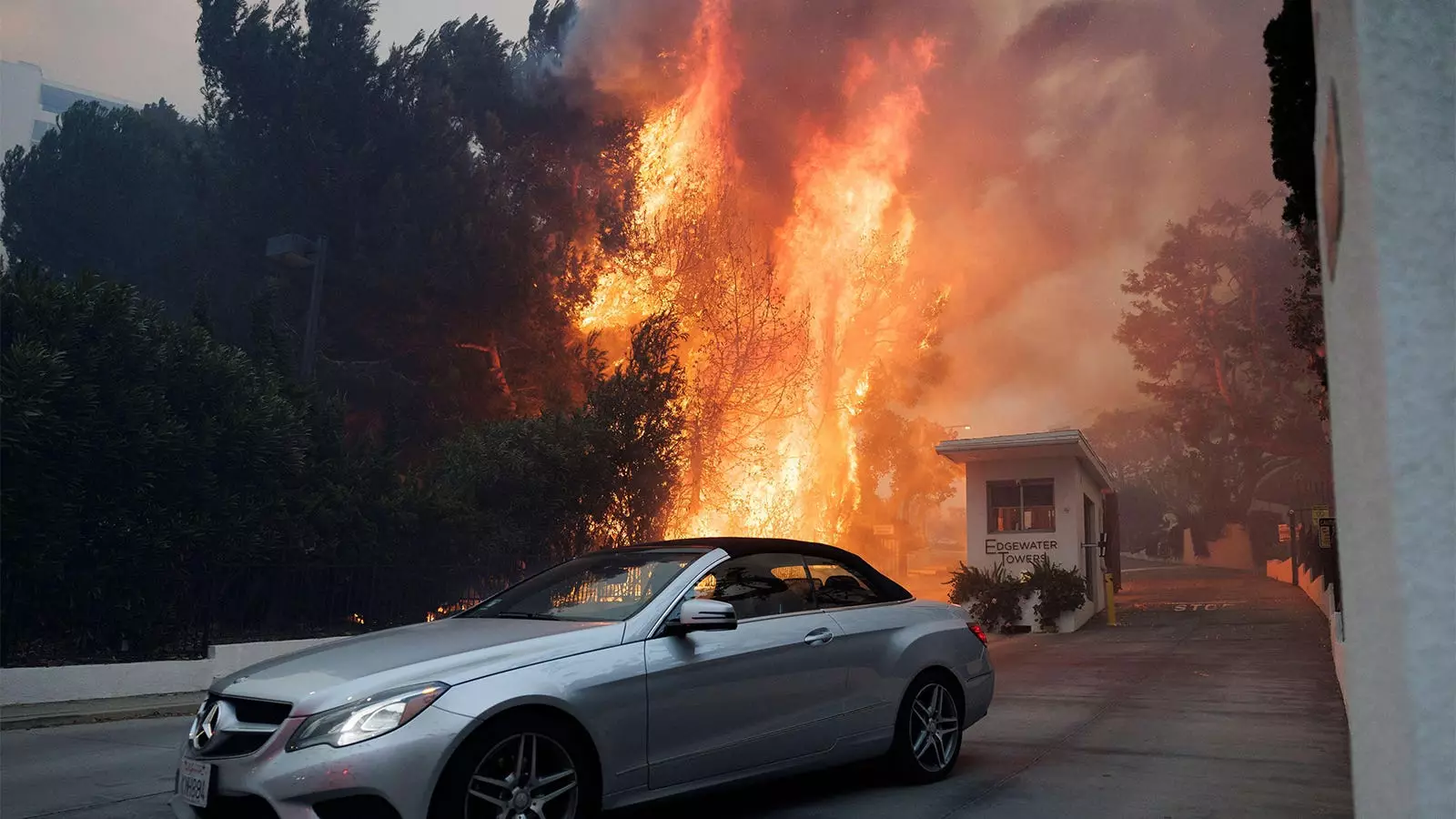On a secluded stretch of the 405 freeway in Southern California, the usual bustle of traffic gave way to an unsettling quiet. As I drove northward, the shadows cast across the asphalt hinted at something ominous brewing in the atmosphere. Miles to the west, plumes of smoke rose menacingly from the Palisades fire, creating a Dali-inspired landscape as the colors blended from twilight blues to ashen grays. The surreal sight felt like nature itself was offering a critique of human existence, a poignant reminder of our vulnerability in the face of ecological calamity.
Through the Sepulveda Pass, ash particles drifted into my vehicle, enveloping it in a hazy cloud of particulates. The distant thrum of helicopters and military aircraft accentuated the stark reality of a community poised on the precipice of disaster. Upon entering the San Fernando Valley, I glimpsed burning hillsides, their fiery glow resembling molten lava in a desolate environment. The city I had long known was being transformed into a nightmarish canvas where the lines between reality and nature’s wrath blurred.
These blazes are unlike any witnessed before. They devastate hundreds of thousands living along the urban-wildland interface, introducing a constellation of threats that extend far beyond the flames. As structures succumb to the inferno, they release harmful chemicals into the atmosphere. The result is a cocktail of particulates, including PM2.5, alongside hazardous byproducts from burning plastics, fire retardants, and materials long considered safe within residential and commercial properties.
This environmental crisis spells trouble not only for those living in proximity to the fires but also for first responders. The clouds of toxins put their health at considerable risk, leading to emerging reports of inhalational injuries among individuals who are theoretically trained to handle such emergencies. As communities scramble to protect themselves, the chaotic and inconsistent use of personal protective equipment raises alarms. Medical professionals and emergency services are witnessing a concerning escalation in patients seeking urgent care, suggesting a public health emergency lurking beneath the surface of the wildfires.
Moreover, as the smoke dissipates, we might face the aftermath — chronic health complications arising from prolonged exposure to a cocktail of chemicals. Cancer incidence rates could surge, echoing the tragic legacy of the World Trade Center disaster, with future generations bearing the psychological scars of such experiences.
As an occupational health physician, I am particularly attuned to the psychological ramifications of such disasters. The agony of losing one’s home is more than a physical loss; it is an emotional upheaval that reverberates through the fabric of families and communities. Individuals of all ages will grapple with their mental health in the wake of wildfires. Anxiety, depression, and post-traumatic stress disorder will haunt many, further complicating the public health landscape as rigorous treatments become essential.
In this intricate dance of environmental disaster and human health, those of us trained in occupational and environmental medicine must lead the charge to ensure collective resilience. Our expertise uniquely positions us to connect public health implementation to medical surveillance, identifying risks and addressing them systematically.
Creating Tomorrow’s Strategies Today
To effectively navigate these crises, we must enhance our frameworks for understanding environmental hazards. First, we should devise comprehensive research strategies that assess impacts on various populations, with special attention to vulnerable groups. This means not just reacting to crises after they occur but also preemptively preparing our healthcare systems for better emergency responses.
We must also forge alliances with the technology sector to innovate real-time environmental monitoring tools that compile data on air quality, pollutant levels, and healthcare access points. Such resources are crucial for communities now more than ever. Personalized guidance systems can offer immediate advice based on an individual’s health condition and local environment, creating a safety net that can adapt before devastation strikes.
A glaring issue persists: the acute shortage of occupational and environmental medicine physicians. With many training programs vanishing over the past decades, a pressing challenge emerges as we face mounting environmental threats. Investing in these educational programs is paramount to cultivating a workforce adequate to combat the escalating crises we anticipate in the years ahead.
As Los Angeles traverses this critical juncture, we must acknowledge our role in shaping a sustainable future. The echoes of past calamities can inform our strategies, urging us toward innovation and resilience. By harnessing the collective power of medical expertise, technological advancement, and community engagement, Los Angeles can redefine its relationship with the environment. As the smoke dissipates, our vision for a healthier, more adaptable future must grow clearer, guiding our path toward mitigation and adaptation in the fight against climate change.
Manijeh Berenji, MD, MPH, is a leading voice in occupational and environmental medicine, committed to advocating for a healthier relationship between humanity and the environment. Her work underscores the urgency of preparing for the inevitable crises that lie ahead and seeks to pave the way for sustainable urban living.

Leave a Reply